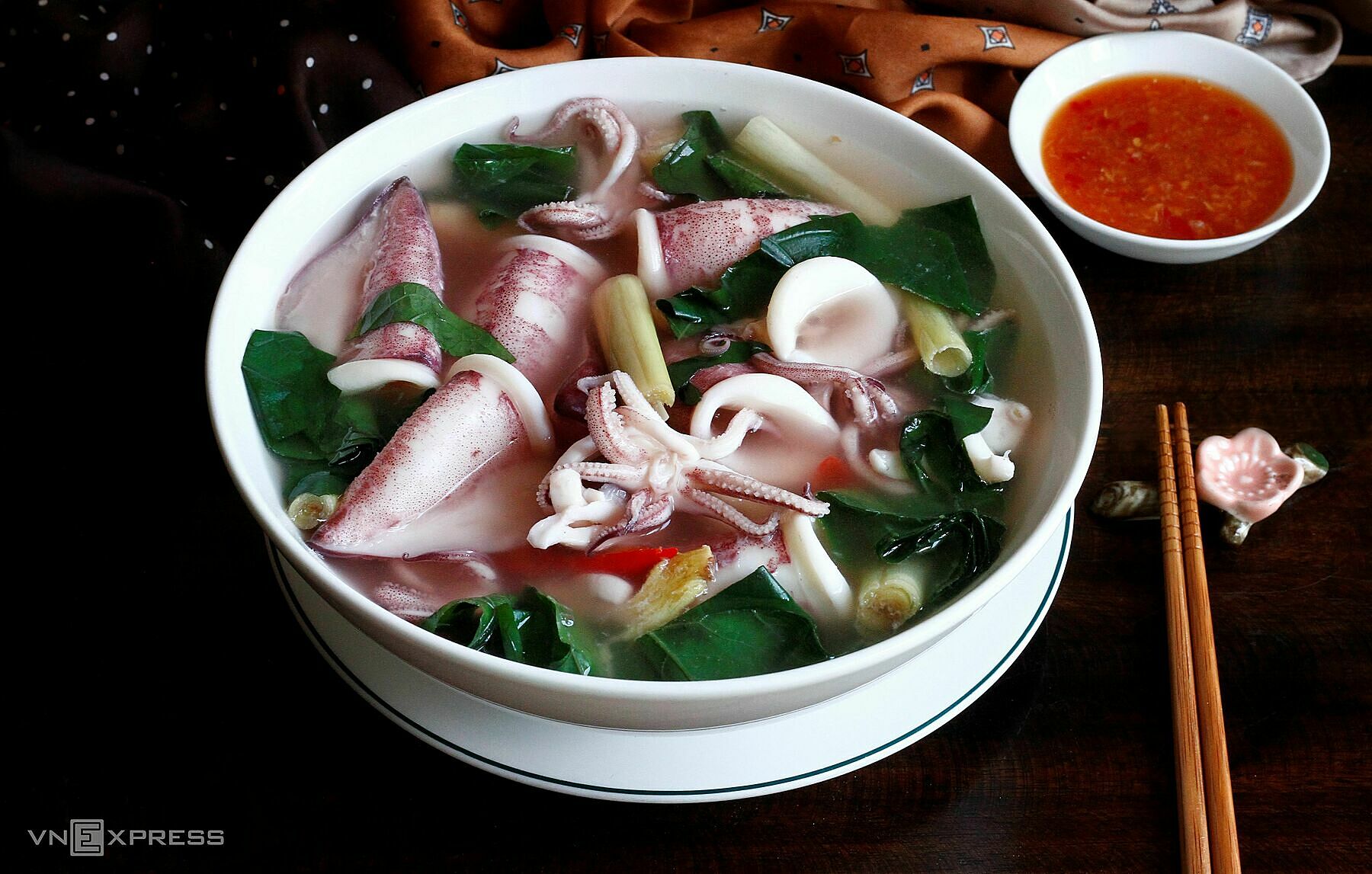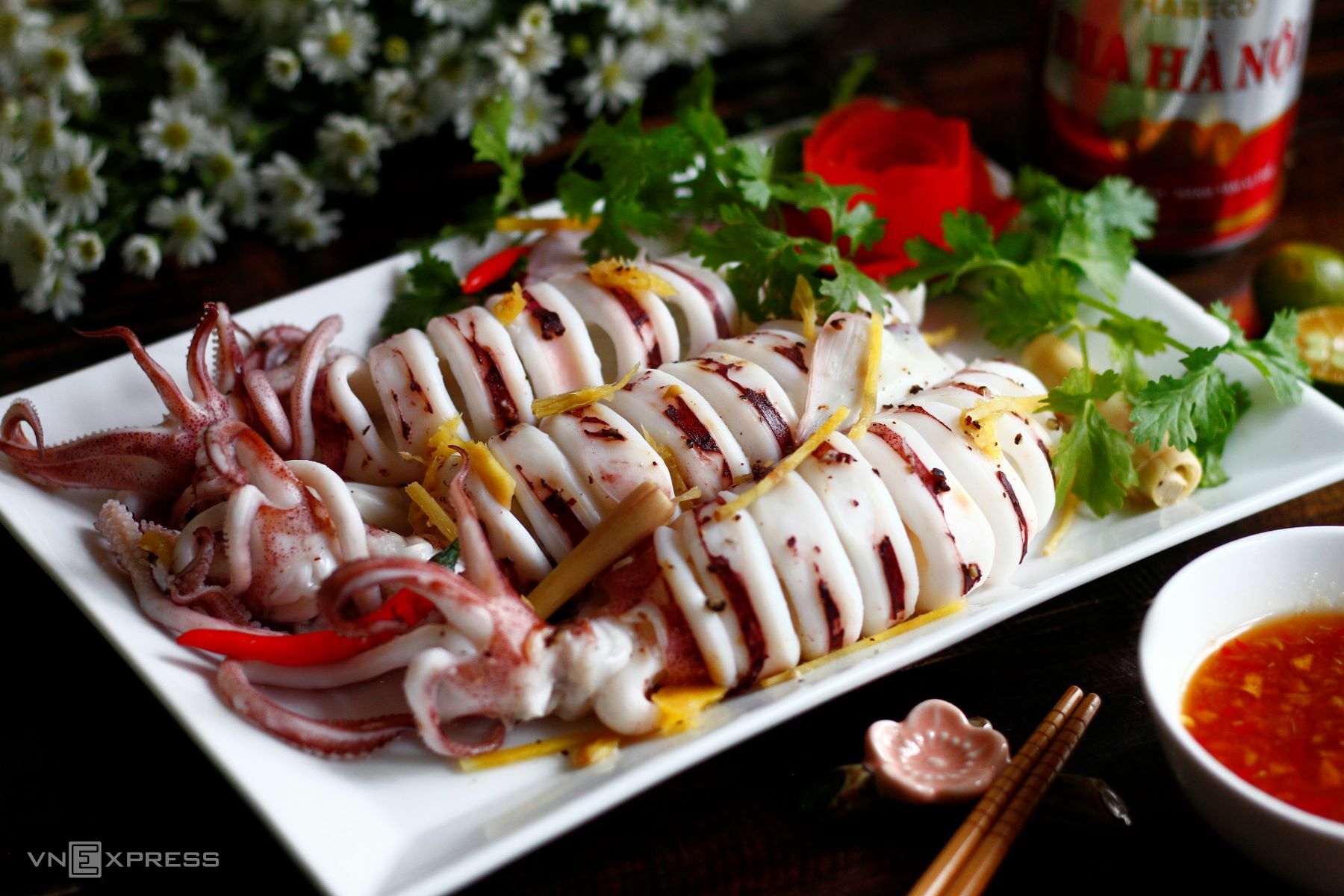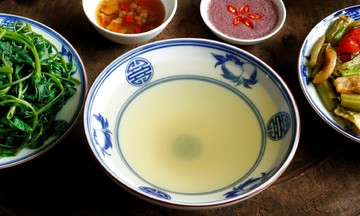In fishing villages along the coast from Quang Ninh and Hai Phong to Phu Yen and Khanh Hoa, freshly caught squid is often boiled directly on the boat or at home.
The fresh squid is placed in boiling water without stirring to prevent tearing. After returning to a boil, it only needs 1.5-2 minutes before being removed. Proper boiling results in tender, sweet, and firm squid with a strong ocean flavor.
 |
Boiled squid with lolot leaves, Quang Ninh style. Photo: Bui Thuy |
Boiled squid with lolot leaves, Quang Ninh style. Photo: Bui Thuy
In urban areas or regions far from the sea, squid is often frozen for transport. This can cause it to lose moisture, making the flesh softer. If not boiled correctly, it can become bland and fishy.
Therefore, many choose to steam the squid with ginger, lemongrass, white wine, and spices to mask any fishiness and enhance its natural flavor.
However, frozen squid can still be boiled successfully. The trick is to not thaw it completely, just rinse off the outer layer of ice before placing it in boiling water. Depending on the size, boiling for 2-5 minutes achieves a tender, sweet result.
Scientifically, squid contains proteins and amines like trimethylamine, the primary cause of its fishy smell. Heat causes these compounds to evaporate and denature, so cooking must be quick and hot enough. Steaming, with its temperature limit around 100°C and indirect heat, preserves the structure and minimizes flavor loss when delicacy is desired.
Boiling, with its more direct and intense heat transfer, firms the squid if timed correctly, sealing in the juices and effectively eliminating any fishy odor, especially when boiled with mildly acidic ingredients like tamarind, lemon, or chay fruit. Each method has its advantages, the key is choosing the right one for the type of squid.
 |
Steamed squid with beer. |
According to Eastern culinary theory, squid has a cooling nature and a sweet, salty flavor. If not prepared carefully, consuming too much can lead to indigestion.
Steaming, which uses water vapor and is considered "yin," suits those with "yang" constitutions who need cooling foods. However, steaming for too long or with cooling ingredients can make the squid tough and excessively "yin."
Boiling with warming ingredients like ginger, lemongrass, tamarind, or guava leaves balances the squid's coolness. The strong heat, boiling water, and warm, spicy seasonings create a yin-yang balance, aiding digestion. This is suitable for those in coastal areas who engage in strenuous activities at sea.
Between steaming and boiling, there's no single right way. The best method depends on the ingredients and circumstances. Steaming preserves the squid's delicate, subtle flavors. Boiling, when done right, evokes the simplicity of a coastal village meal: unpretentious, warm, and redolent of the sea.
Bui Thuy












